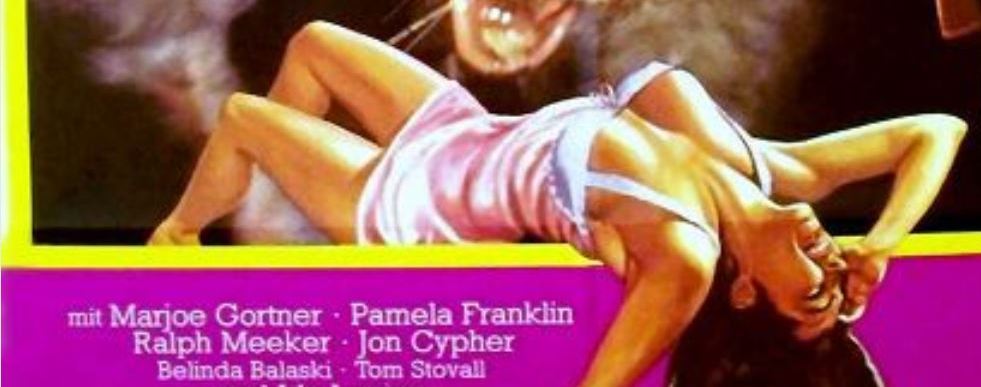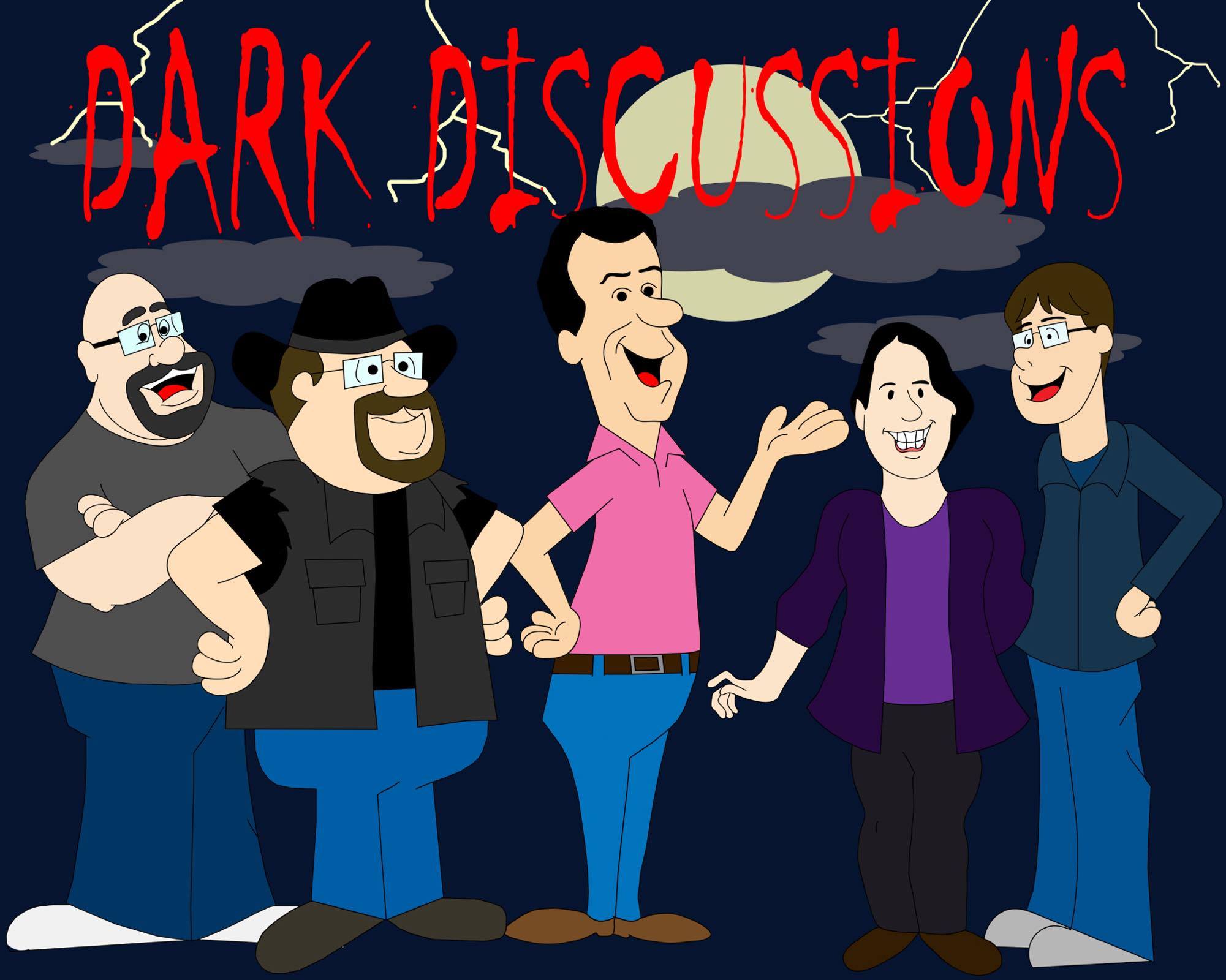Camera Obscura: 1970s Horror Cinema — Mother Nature Bites Back!
By David F. Kramer
At their core, most forms of art are mirrors we hold up to view ourselves, our culture and the current state of the world around us. And the horror film is no exception — except perhaps that these varieties of mirror are more at home in a funhouse than in our house.
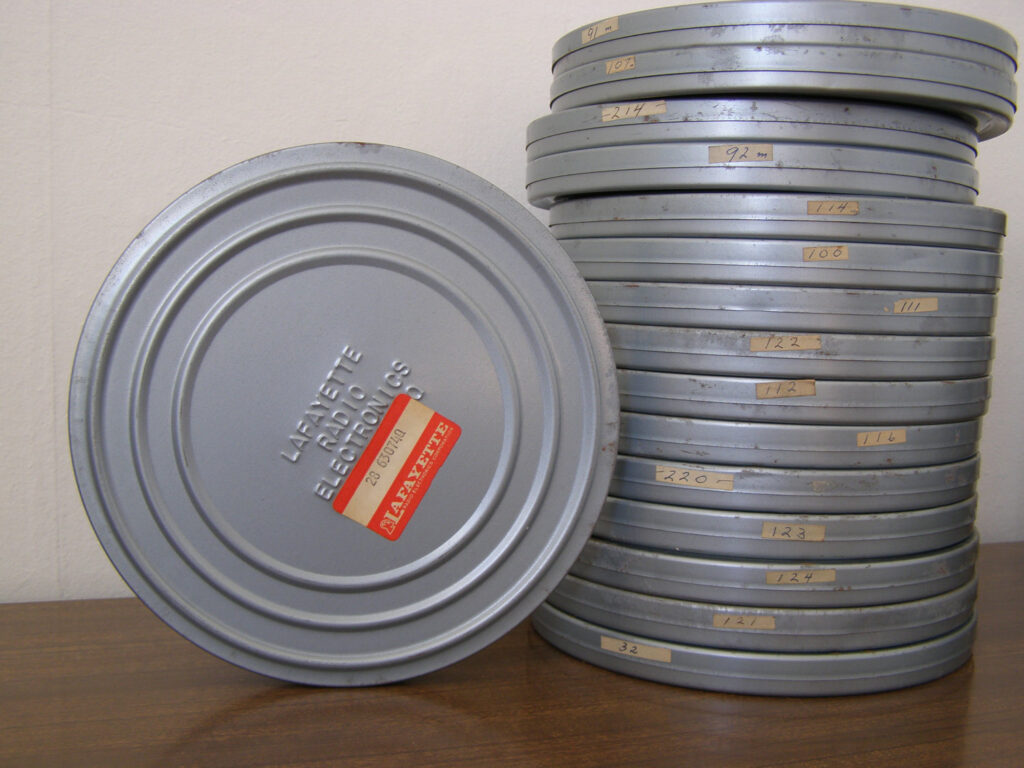
As art is concerned, cinema is certainly one of the babies of the family. In the scant 126 years since the Lumière brothers first set up that clandestine and clumsy rendezvous between celluloid and light, the horror film has always reflected that which scares us the most. But like all things, time, history and tastes change along with the weather.
In the 1930s, the advent of the modern horror film brought forth assorted and sordid creatures and spirits from hundreds of years of folklore and fantasy to wretched life on the screen. When the 1940s arrived, it brought its own unique brand of war, xenophobia and uncertainty to our lives – and the horror genre followed suit with monsters both familiar and brand-new terrors borne of modern times.
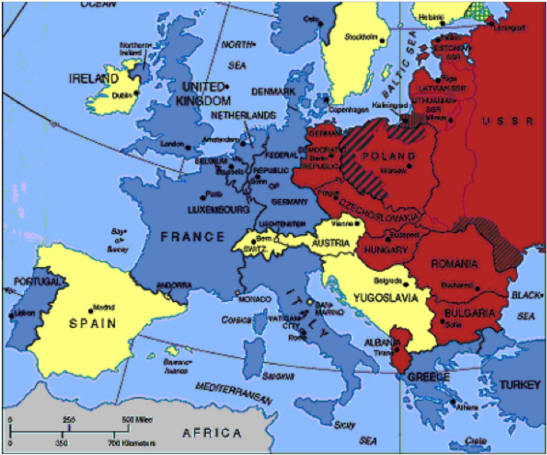
When the specter of the Cold War materialized from the ashes of atomic annihilation in the 1950s, the idea of terror turned both inward and outward — with threats coming from the darkness of unknown outer space, while here at home remained the terrible idea that our closest friends and family may not be what they seem. The 1960s chipped away at our innocence with geopolitical upheaval and a bit more war, and left our collective conscience riding out on a euphoric wave of sex, drugs and rock and roll.
In 1970, the Clean Air Act was amended to include air quality standards, toxic emissions limits and other actions that shined a much-needed spotlight on the damage we were doing to our fragile environment. We didn’t need to travel to the outer reaches of the galaxy or look to legend for our monsters — we were mixing them up in our own backyards on the cheap. The next hazard to the dominion of mankind might very well be the plants, insects and animals we so casually harmed in our quest to stay on the tippy top of the old food chain.
So, a lot of horror in the 1970s concerned man’s rather unceremonious move from the dining table to the Early Bird Special on the menu. And boy was it tasty! In coming columns, we’ll explore this dynamic decade, and all the flicks that made it unforgettable.
Food of the Gods (1976)
One of the cardinal rules of monster movies is that you simply can’t spell “big” without Bert I. Gordon — and the Swingin’ Seventies were no exception. More than just syntactically correct, Mr. Gordon’s freakishly large thumbprint has graced so many larger than life film spectacles — from glandular-challenged dinosaurs, military personnel, hairy spiders and a pack of slightly less hairy young hippies — all in a convenient ready to crush, kill and destroy super-size poised to terrorize an unsuspecting populace!
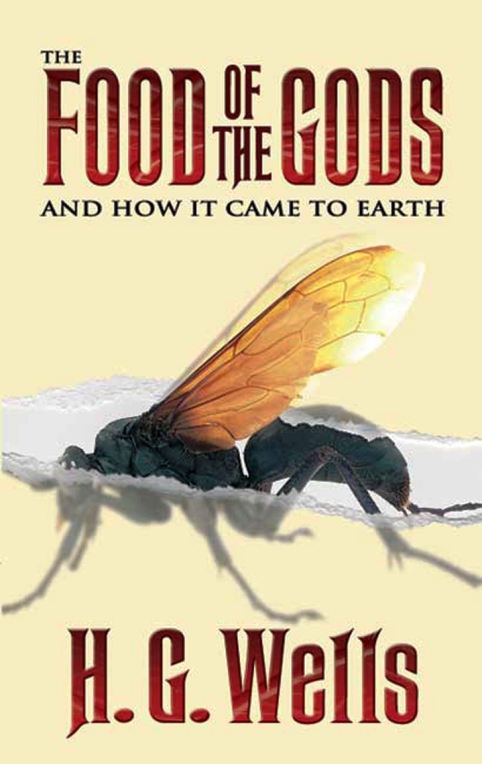
While the literary output of H.G. Wells (1866-1946) has seen many film adaptations, Gordon technically had two bites at that golden apple — because both The Village of the Giants (1965) and Food of the Gods (1976) were both rather loosely based on portions of the novel The Food of the Gods and How It Came to Earth (1904).
Clocking in at just 88 minutes, FOTG needed to hit the ground running, so like all great horror films, it had the good sense to start in the middle. After a slight hint at funny goings on in the woods on the other side of everything are we introduced to Morgan — the quarterback of “way too old to attend undisclosed University’s” football team. He’s played by Marjoe Gortner, who will knock off your celestial socks two years later in the star-studded Star Wars star-cash-grab Star Crash, and his pigskin co-pushers Brian (Jon Cypher) and Davis (Chuck Courtney).
What better way to blow off some pre-playoff steam than a hunting trip to the wilds of Canada? While on horseback, the trio’s mounts are spooked by gargantuan wasps, and the group is savaged by the aforementioned insects as well as some giant chickens. It’s the kind of bad day for which they don’t make an Epi Pen large enough to come back from. Davis is down and there’s a flag on the play.
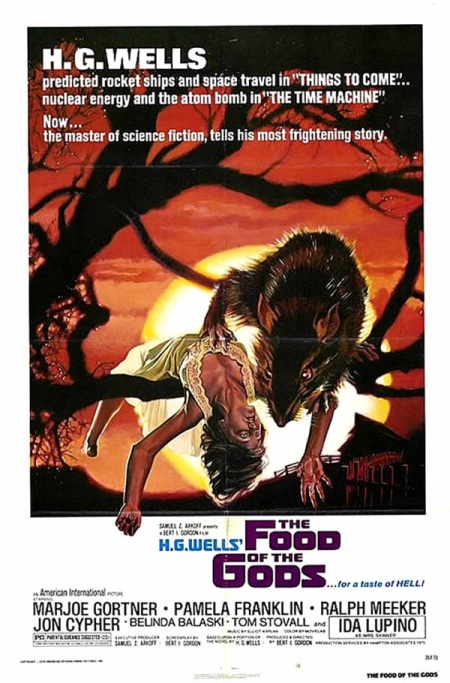
Enter the Skinners (which also sounds like a great title for a horror film) John McLiam and fading Hollywood starlet Ida Lupino. They own the farm with the bubbling crude that’s putting local fauna in the mood — and Mr. Skinner’s gone native to try and sell off the gurgling rights. Clearly, he’s never seen a horror movie. But that’s OK, he gets a flat tire and a pack of giant rats bring him up to speed with the plot.
A few scenes later we’re introduced to two crazy kids — a very pregnant Rita (Belinda Balaski) and Thomas (Tom Stovall) whose camper breaks down smack in the middle of Rat Street Station. Their plight is all but ignored by seemingly unrepentant baddies Jack Bensington (Ralph Meeker) and Lorna Scott (Pamela Franklin) — an unscrupulous businessman and somewhat scrupulous bacteriologist respectively — who are on their way to the Skinner abode to talk turkey about those giant chickens with cash in hand. But like every other well-meaning young couple in horror film history (think about that fateful gas fill-up in Night of the Living Dead) – you know they’re going to be in for a tough time.
According to Mrs. Skinner, this popular new grub has been coming up through the ground. The animals will only eat it when it’s mixed with food, and only the babies become gigantic. And of course, it’s a gift from God, given for extreme devotion while serving time on battlefield earth. With the ground rules of the white stuff firmly in play, it’s time to get down to business.
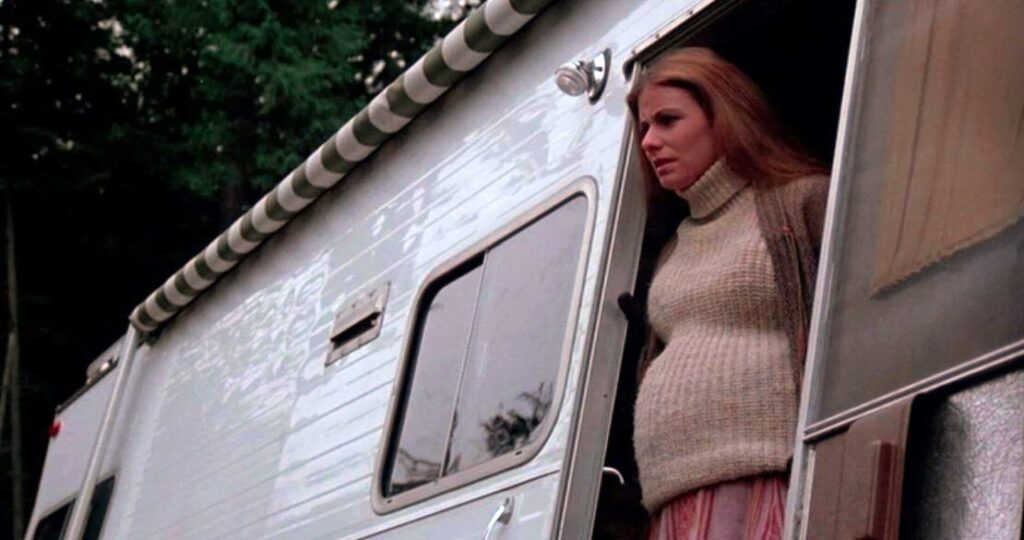
Morgan and Brian return to the island to get their revenge on the wasps by employing equal parts of freakish knowledge of both insect husbandry and explosive demolition. In the meantime, the rats get organized. A white rat that’s conveniently easy to spot later in those rat-heavy sequences emerges as master and leader. Lucky thing for us because you can’t tell one rat from another without a program. A rodent-human battle of epic proportions ensues.
Without giving away too much of the plot, the rats spend the rest of the film chewing up the scenery (and a few co-stars). The usual crew of heroes and villains make us dubious about the role of science and the folly that comes from the pursuit of the almighty dollar, while strangely hopeful about generations to come. I mean, a baby is born after all. And it’s all wrapped up in an eco-conscious bow.
The special effects fall into the category of somewhat special – with equal parts forced perspective, miniature sets and physical props for those close-up and personal interactions between man and rat, wasp or chicken. And of course, a whole butt-load of genuine rats cavorting about on camera.
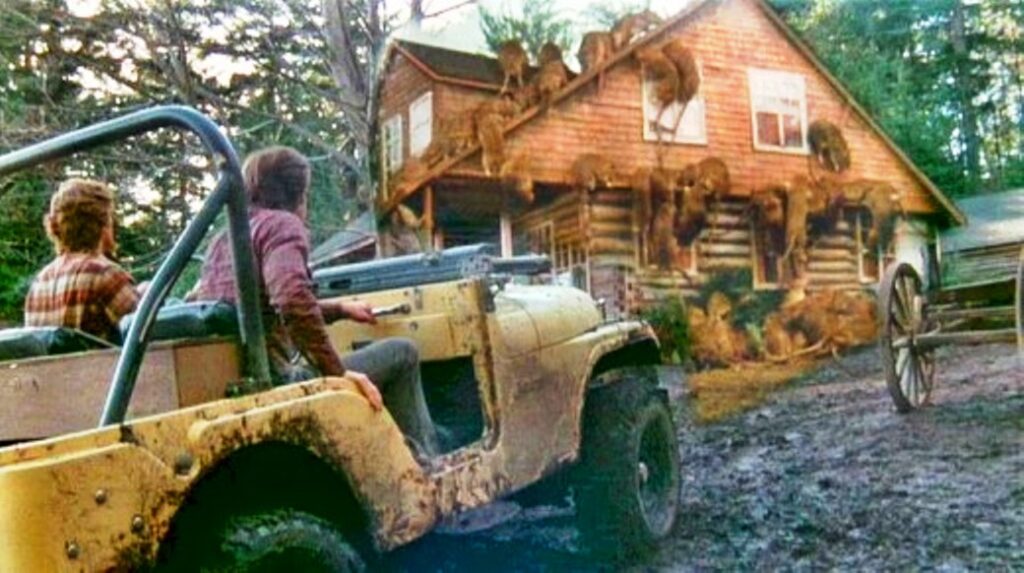
As a child, I was never a big fan of the kind of horror and sci-fi films that were content to super glue a few horns and spikes onto a pair of iguanas and throw them towards the camera to see what they’d do. With a unique combination of rats, water and electricity, it’s tough to imagine that more than a few rodent stars didn’t end up in that great pantry in the sky, giving their all in the name of art. But as they say, that’s show biz.
By resolution time, we’re up to our collective necks in dead rats, and the last few containers of the Food of the Gods are making their way downstream to be eaten by cows whose resulting milk is destined for the local preschool and a lackluster 1989 sequel. Indigestion all around.










